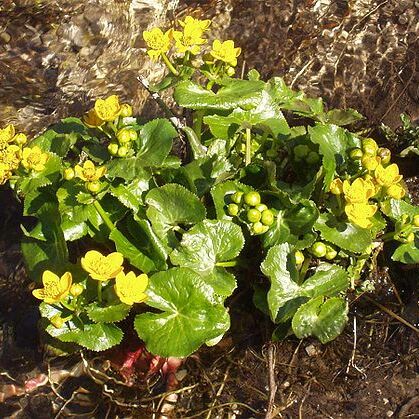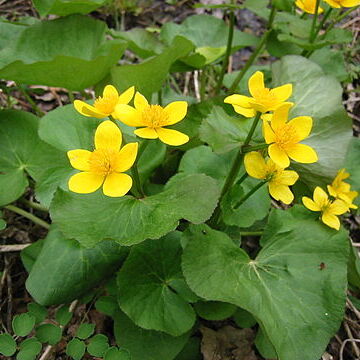Herbs perennial, glabrous, with fibrous roots. Stems simple or several branched. Leaves basal, or both basal and cauline, sometimes distal cauline ones palmately lobed, orbicular, reniform, or ovate, base cordate, margin dentate or entire; petioles sheathed at base. Flower solitary, terminal, or 2 or more in a simple or complex monochasium opening nearly flat. Sepals 5 or more, petaloid, yellow, rarely white or red, obovate or elliptic, caducous. Petals absent. Stamens numerous; anthers elliptic to oblong; filaments linear. Follicles 5--40, sessile, sometimes stipitate, with branching transverse veins, styles distinct or nearly absent; ovules several to many. Seeds several in a follicle, ellipsoid-globose, smooth.
Fls few to 1, perfect, regular, hypog. Sepals 5-10, petaloid, yellow or white; petals 0; stamens ∞; carpels 5-11, ovules several in 2 series. Fruit of a few follicles, each with several to many seeds. Perennial herbs with creeping rhizomes and ± cordate radical lvs. About 20 spp. of temperate regions. The N.Z. spp. are endemic and belong to the section Psychrophila as defined by Hill (Ann. Bot., Lond. 32, 1918, 421-422).
Sep 5–9, petaloid; pet none; stamens many; staminodes none; pistils 4–many, the style very short; follicles compressed to subterete; low perennial poisonous herbs of wet places, with alternate, petiolate, entire or merely toothed lvs and peduncled, axillary or terminal fls. 15, circumboreal.


